Ceratina nigrolateralis (Cockerell 1916)(Hymenoptera: Apidae: Ceratinini)
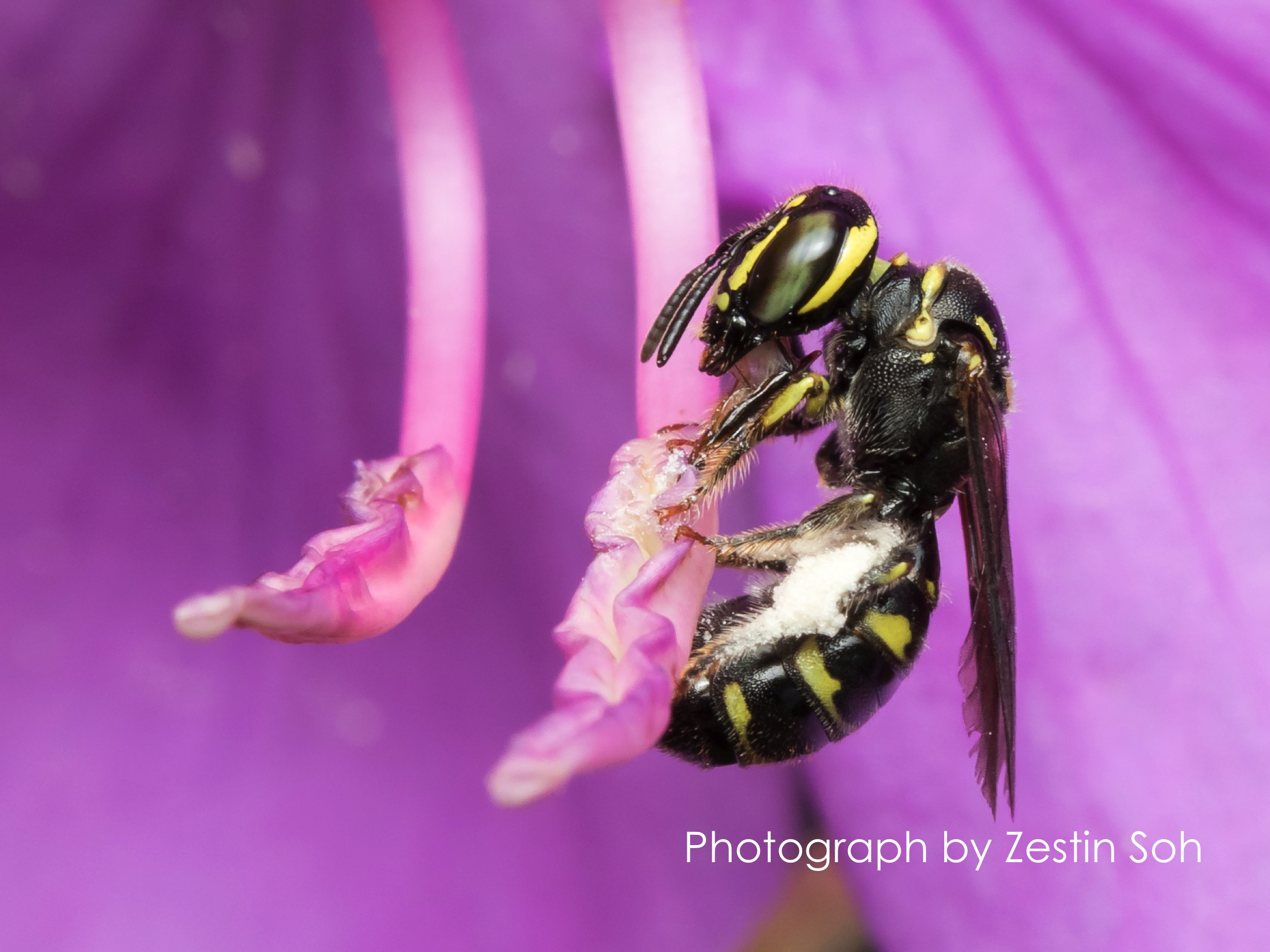
Introduction
Table of Contents
It would therefore come as a great surprise to know that the tiny members of the genus Ceratina are some of the closest relatives of the large carpenter bees of the genus Xylocopa, some of the largest bees in Asia. The Xylocopinae subfamily of Apidae includes both Xylocopa from the Xylocopini tribe and Ceratina, the only genus in the Ceratinini tribe [1]. This despite the largest size of members of Ceratina to be only approximately a third the size of a Xylocopa.
Though Ceratina are much less studied, the genus consists of 23 subgenera and are found in all continents [2]. More than 45 species have been found in Southeast Asia, with the 10 or more species in Singapore representing five out of seven regional subgenera. Despite their value as pollinators, knowledge about Southeast Asian Ceratina only began to develop more quickly in the 2000s and specific information about C. nigrolateralis remains limited.
This page therefore aims to shed light upon Ceratina nigrolateralis, a species native to Singapore. The author hopes that this page will be useful towards enthusiasts, biology students and those seeking a more comprehensive understanding of the biology and ecology of this species.
Morphology
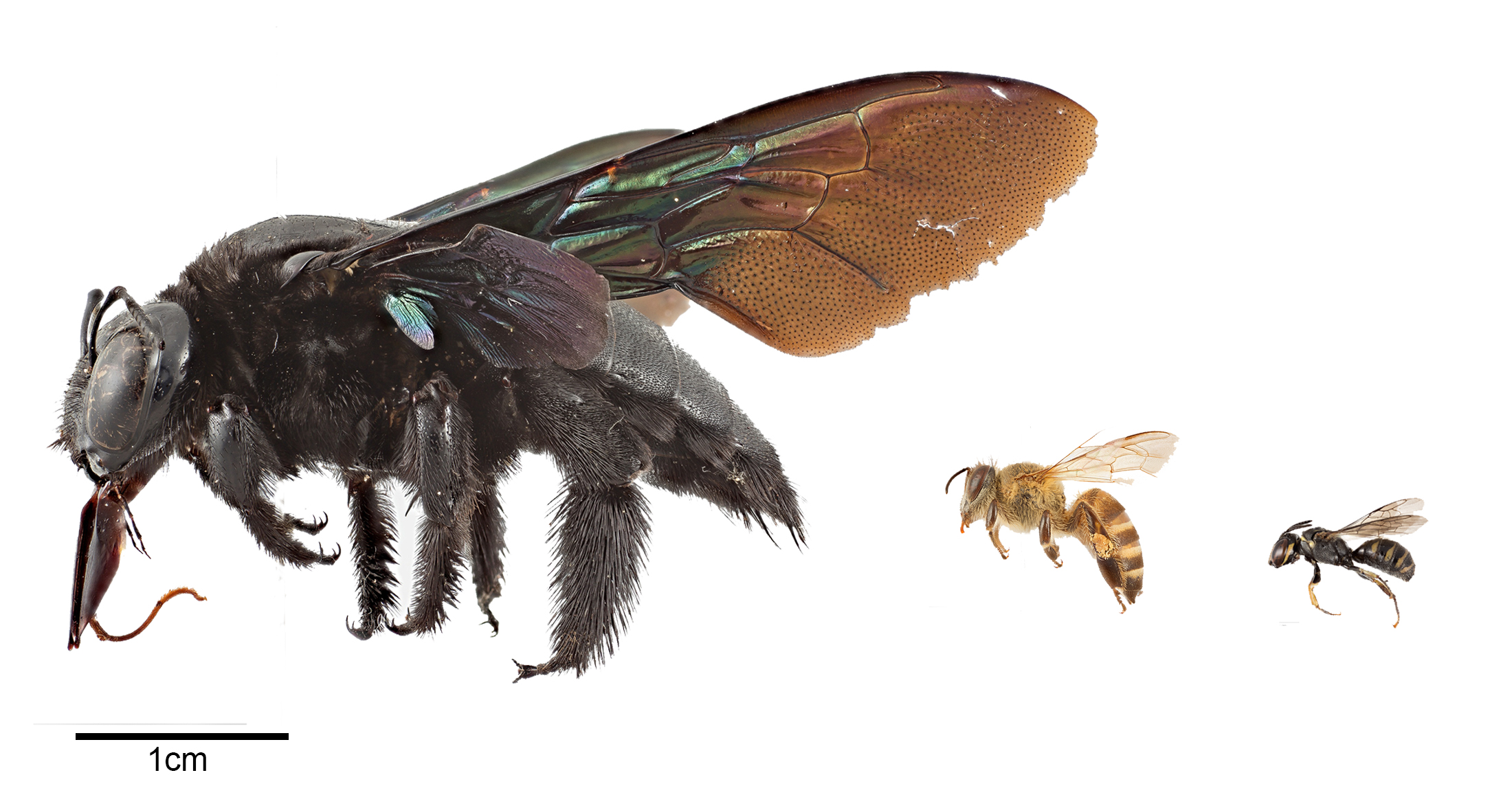
The Xylocopinae subfamily of Apidae constitutes bees with diverse sizes and appearances. From the large carpenter bees of the genus Xylocopa from the tribe Xylocopini to the small carpenter bees of the related genus Ceratina. Ceratina, however, are much smaller and more slender, coming to no more than 8mm in length in comparison to Xylocopa which can grow to more than 20mm in length (Figure 2).
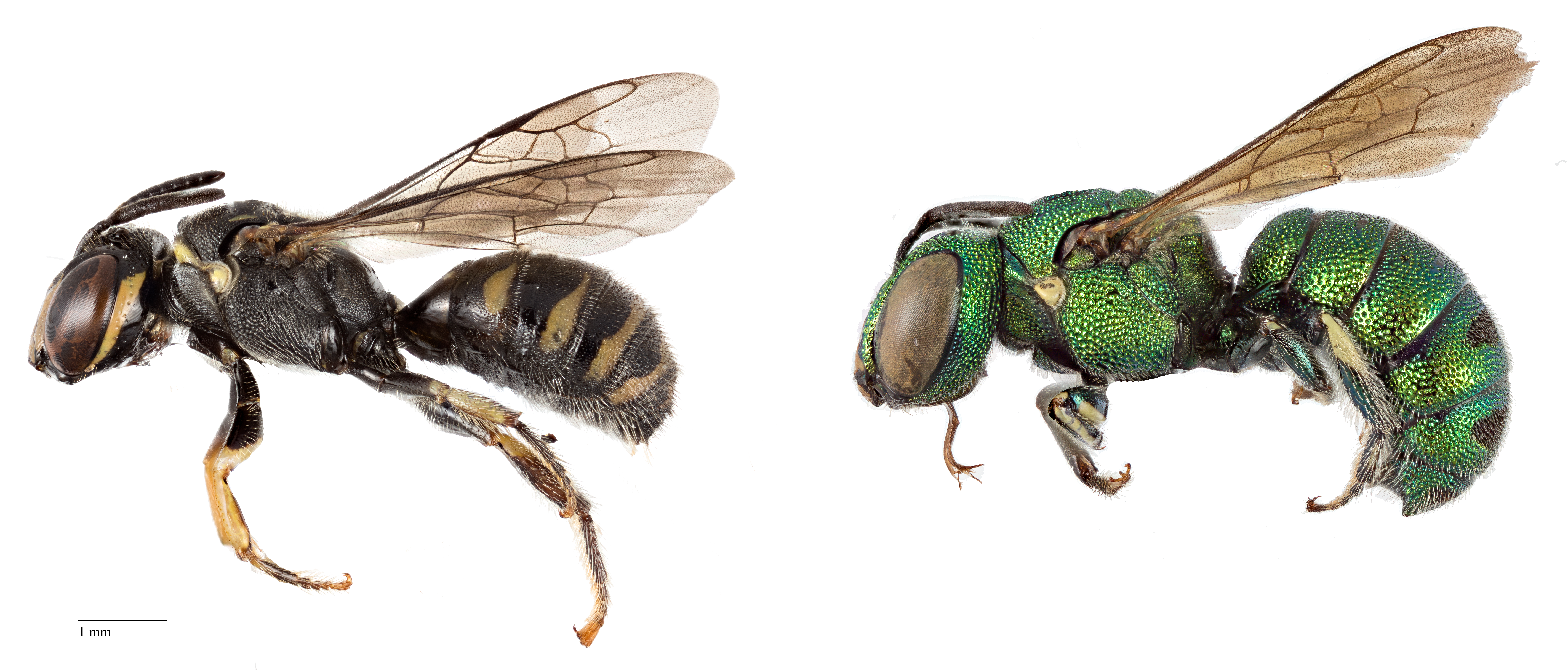
Though members of the genus are usually associated with metallic blue and green coloration, various subgenera, such as Ceratinidia, are characterized by strong black and yellow colors. Ceratina nigrolateralis is a member of the Ceratinidia subgenus which is easily differentiated from other common subgenera, generally, by their extensive yellow markings (Figure 3).
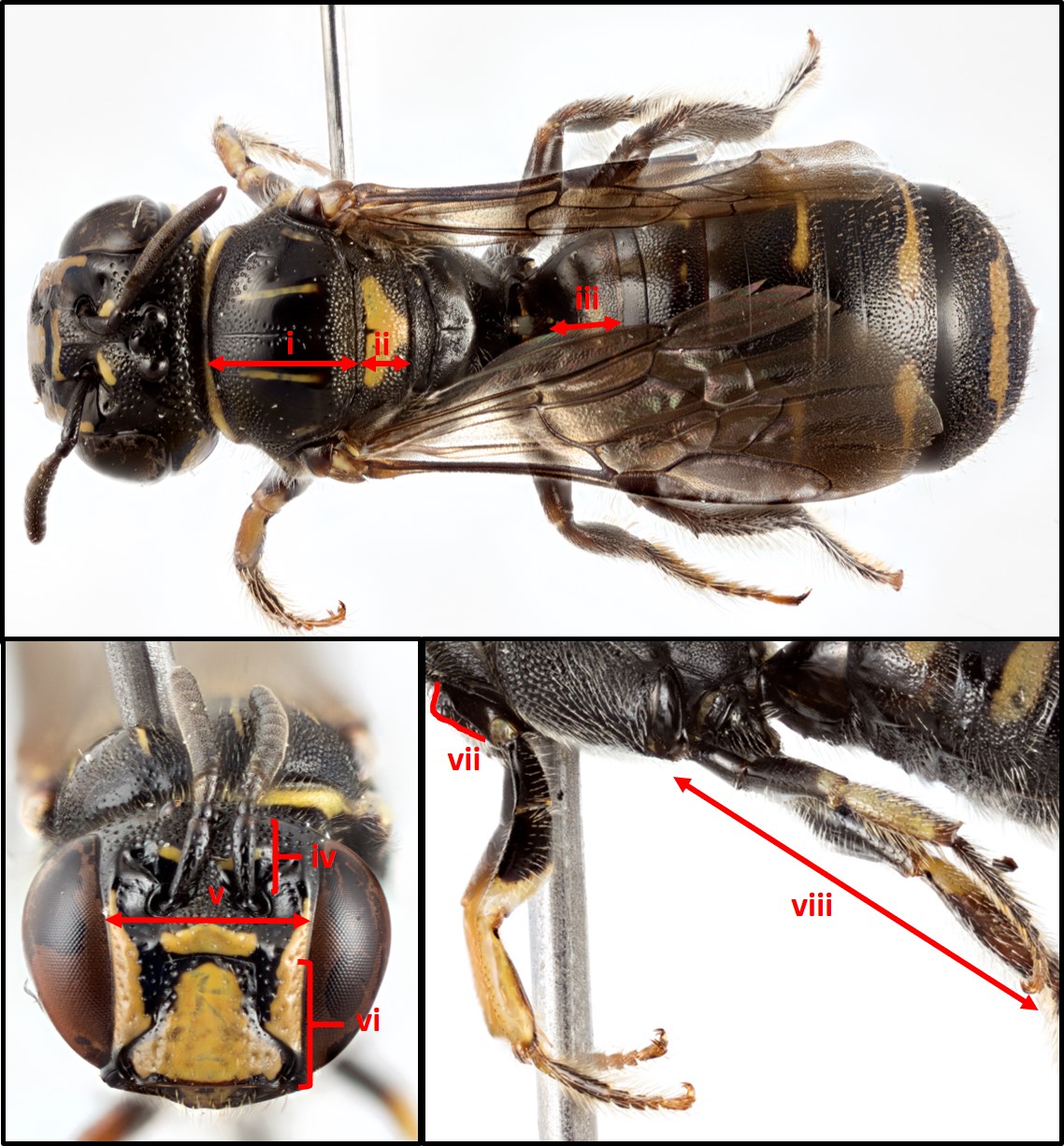
At a deeper level, C. nigrolateralis can be recognized via the pattern and density of punctuation on the scutum (Figure 4i) and between the eyes (Figure 4v). Distinctive yellow markings are observable on the scutellum (Figure 4ii) and clypeus (Figure 4vi). The antennal scape are dark or black (Figure 4iv) and the T1 tergite has a reduced yellow marking compared to other species that forms a spot in the center (Figure 4iii). C. nigrolateralis also has a strong lateral angular projection of the front coxa (Figure 4vii) and a distinctly colored midleg (Figure 4viii) [5] [11]. Due to the approximately 7mm size of C. nigrolateralis, a microscope or magnifying glass may be required to view certain characteristics.
Nesting
Ceratina are subsocial bees, multi-female nests have been recently observed that are communal, with females within the nest exhibiting reproductive differentiation. As a carpenter bee, Ceratina, like Xylocopa, nest in wood. However, unlike Xylocopa, which chews and bores into wood, C. nigrolateralis females disperse from natal nests to seek dead, exposed pithy stems as appropriate nesting substrates (Figure 5). The females will forage for and build a pollen mass on which they will lay one egg, before capping the brood cell with wood pith. This is then repeated along the linear nest chamber (Figure 6). C. nigrolateralis burrows have been found to have very long burrows, with about three quarters left as entrance galleries [12].
Species Interactions
Pollination and Agriculture
Video: Ceratina foraging on long-bracted spiderwort. Source: Youtube
Ceratina are generalist pollinators which visit a diversity of plants and crops (polylectic), carrying their pollen on their hind legs (see Figure 1). As they nest within dry stems and twigs and thrive on flowers near nests sites, they have been demonstrated to have potential for domestication [9][13] and have been shown to successfully increase crop yield [14][15]. Due to the benefits of using native species as crop pollinators, they have potential agricultural significance.
Parasites
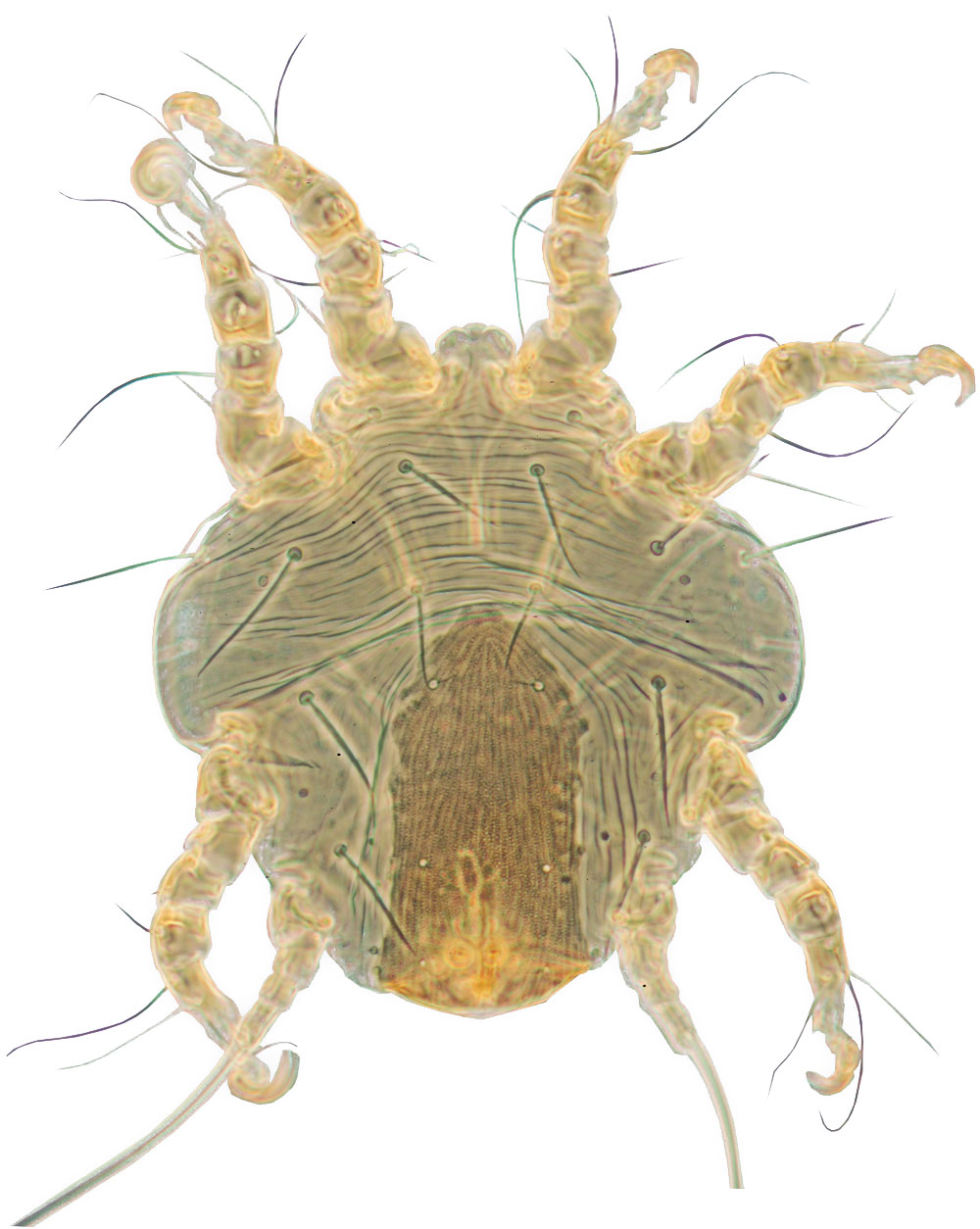
Mites within the Sennertia genus (Acari: Chaetodactylidae) have been associated with Xylocopinae for an extended period [16] [17]. It was suggested that the cleptoparasites kill young bees in brood cells and feed on pollen provisions [18]. This has been debated, with other authors bringing forth the possibility that the mites do not kill the brood as they develop within the cells [19]. Warrit (2007) [9] confirmed the observation of Sennertia mites on Ceratinidia specimens.
Distribution
Singapore
The species has been found in almost every different habitat available in Singapore, from the managed greenery within the urban National University of Singapore (NUS) campus to the Central Catchment nature reserve (CCNR). Records have been made in almost every nature and community park in Singapore and from scrubs near urban landscapes. Specimens have even been collected from among the Jurong subcoastal scrubs [11].Southeast Asia
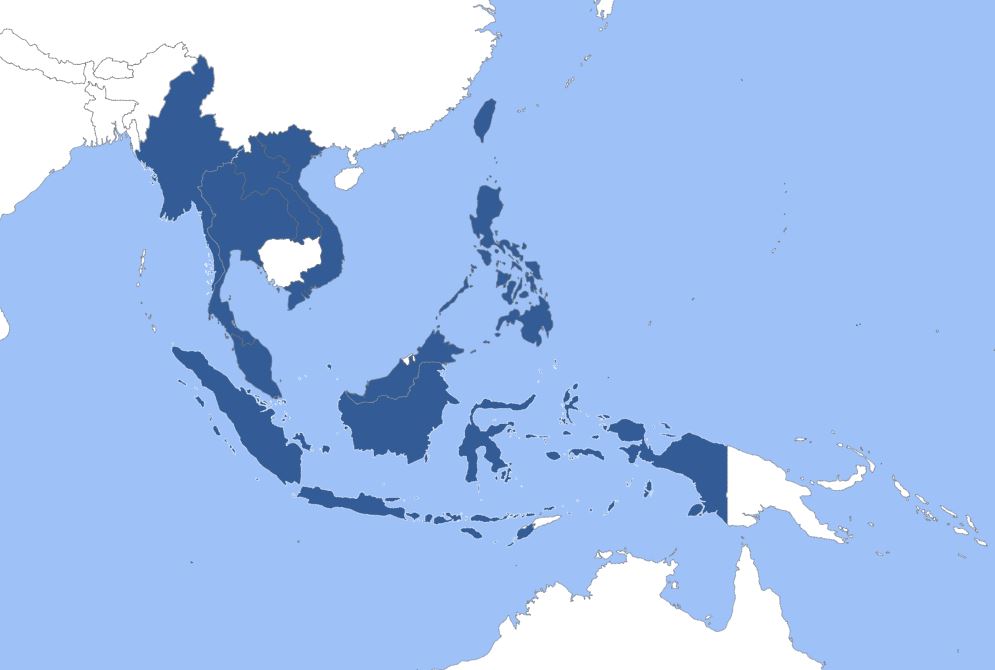
C. nigrolateralis is distributed throughout Southeast Asia (Figure 8). Records of species and subspecies have been found from Taiwan to Bali, Indonesia.
Taxonomy and Phylogeny
Taxon navigation
Kingdom: AnimaliaPhylum: Arthropoda
Class: Insecta
Order: Hymenoptera
Superfamily: Apoidea
Family: Apidae
Subfamily: Xylocopinae
Tribe: Ceratinini
Genus: Ceratina
Subgenus: Ceratinidia
Species: nigrolateralis
Taxon description and revisions
The species was originally described by Cockerell, in 1916 [3], as a subspecies of Ceratina philippinensis, Ceratina philippinensis nigrolateralis (Figure 9). The female holotype is located within the British Museum of Natural History. Van der Vecht [4], who was the first to review Southeast Asian Ceratina, redescribed Ceratina nigrolaterallis as a species and proceeded to provide a key to various subspecies [5]. Following this, the species has had at least three major synonyms, Ceratina acuticauda [6], Ceratina incerta [7] and Ceratina corbetti [8].
Warrit et al. (2007) [9] revised the subgenus Ceratinidia in his dissertation and in 2012, treated most Southeast Asian species in a revision of Thai Ceratinidia [5]. Shiokawa (2015) [10] later revised the compacta species group of Ceratinidia. At present, C. nigrolateralis has 6 recognized subspecies, of which Ceratina nigrolateralis incerta is the form with a type locality in Singapore and is the subspecies inferred in this page [11].
Integrated Taxonomy
The use of integrated taxonomy, the combination of both genetic and morphological data to sort out species relationships has become increasingly applied and important. A barcoding project using 313bp of COI was conducted on morphologically identified Singaporean and Southeast Asian Ceratina species. Although a 3-4% difference is usually expected between species, up to 11.9% pairwise differences could be observed between species of Ceratina, which is very large even with species from different subgenera, while at a subspecies level, Ceratina nigrolateralis incerta and Ceratina nigrolateralis corbetti were found to have identical barcodes while Ceratina nigrolateralis incerta and Ceratina nigrolateralis acuticauda were 6.4% different. The use of both morphology and genitalia are therefore still very relevant, in addition to DNA, as tools in the delimiting of species.Phylogeny
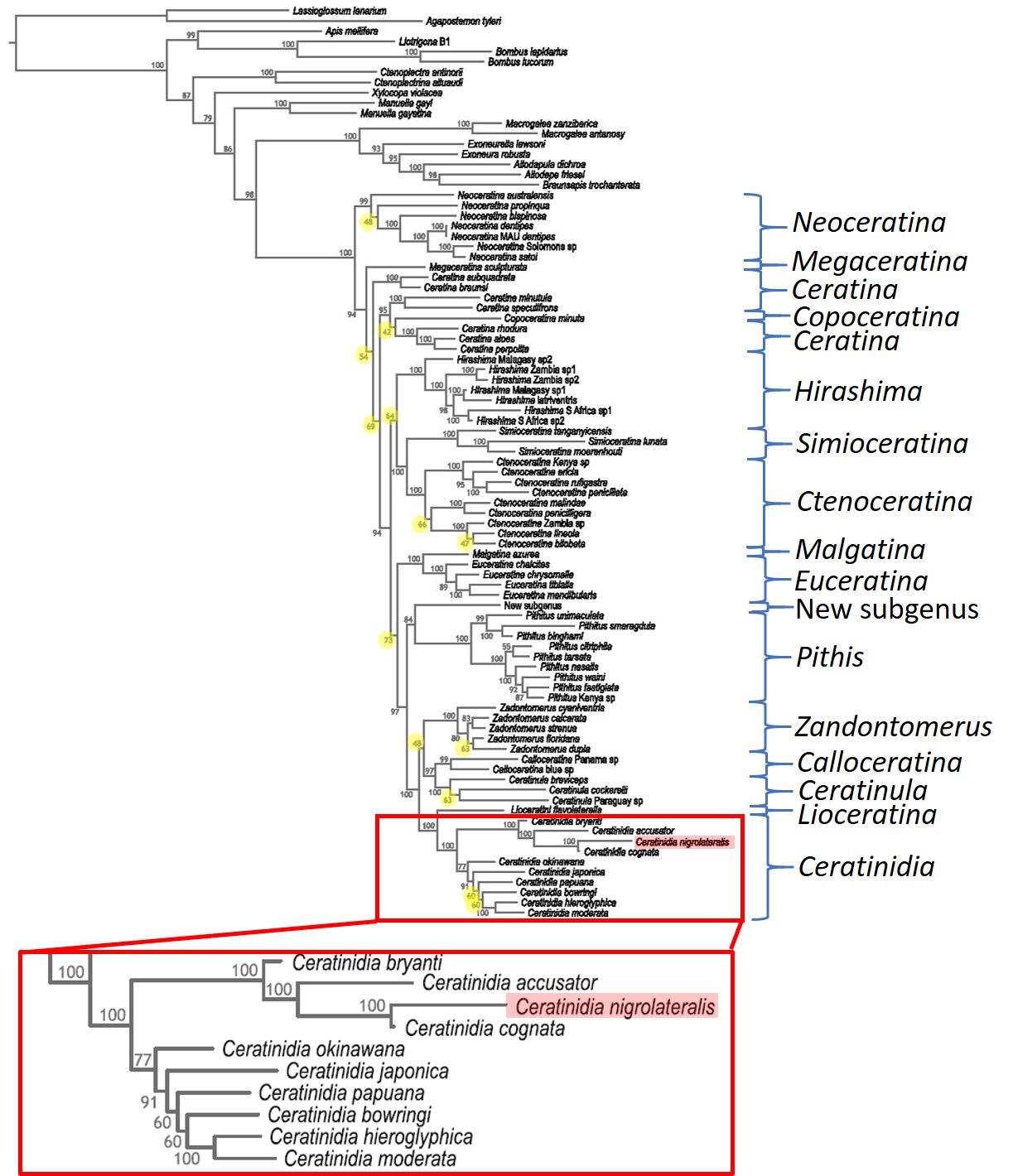
Figure 10. Consensus phylogram from Bayesian Inference (BI) analysis with prosterior probability support indicated for all nodes. Adapted from Rehan et al., 2010 [20]. Subgenera are shown on the right and the red box highlights the Ceratinidia subgenus with C. nigrolateralis highlighted. Nodes with less than 75% support are highlighted in yellow.
The Bayesian inference consensus (figure 10) has a generally high branch support. The authors relied on this tree for the recovering of phylogenies, the data was partitioned into 6 parts and run in MrBayes. The tree shows the highest support at the subgenus level but may be less resolved otherwise. Within subgenera, strong support is generally observed with the exception of a few nodes within Neoceratina, Ctenoceratina, Zandontomerus, Ceratinula and Ceratinidia. However, between subgenera, support can drop lower, as seen from supports as low as 54% between Megaceratina and other Ceratina clades, 48% between Zandontomerus and Calloceratina and 42%, which is observed between Copoceratina and Ceratina. In addiition, the authors also had a Maximum Parsimony bootstrap consensus tree (that was not used to recover phylogeny), with bootstrap supports at similar nodes showing percentage supports that were as low as 10%. A possible reason for the lack of certainty could be a result of the low number of genes used to generate the tree, only two mitochondrial genes, COI and Cytb were used in addition to one nuclear gene, EF1alpha. The authors found that there were higher rates of cladogenesis closer to the origin of each tribe which corresponded to major dispersal events that lead to the extant subgenera [20].
References
[1] Michener, C. D. (2000). The bees of the world (Vol. 1). JHU press.[2] Terzo, M. (2000). Classification phylogénétique des Cératines du monde et monographie des espèces de la région ouest-paléarctique et de lA̕sie Centrale (Hymenoptera, Apoidea, Xylocopinae: Ceratina Latreille) (Doctoral dissertation, Université de Mons-Hainaut, Faculté des Sciences, Laboratoire de Zoologie).
[3] Cockerell, T. D. A. (1916). The ceratinid bees of the Philippine Islands. The Philippine Journal of Science, 11, 301–309.
[4] van der Vecht, J. (1952). A Preliminary Revision of the Oriental Species of the Genus Ceratina Hymenoptera, Apidae. Brill.
[5] Warrit, N., Michener, C. D., & Lekprayoon, C. (2012). A review of small carpenter bees of the genus Ceratina, subgenus Ceratinidia, of Thailand (Hymenoptera, Apidae). Proceedings of the Entomological Society of Washington, 114(3), 398-416.
[6] Cockerell, T. D. A. (1919a). Descriptions and records of bees.—LXXXV. Annals and Magazine of Natural History, 10(3), 240–250.
[7] Cockerell, T. D. A. (1919b). Bees in the collection of the United States National Museum—4. Proceedings of the United States National Museum, 55, 167–221.
[8] Cockerell, T. D. A. (1929). Descriptions and records of bees.—CXVIII. Annals and Magazine of Natural History, 10(4), 142–152.
[9] Warrit, N. (2007). Biological systematics of the genus Ceratina, subgenus Ceratinidia (Hymenoptera, Apoidea, Apidae) (Doctoral dissertation, University of Kansas).
[10] Shiokawa, M. (2010). Taxonomic notes on the compacta species group of the genus Ceratina in the Philippines, with a new species (Hymenoptera, Apidae). Japanese Journal of Systematic Entomology, 16(2), 275-284.
[11] Ascher, J. S., Chui S. X., Warrit, N., Soh, Z. W. W., Lee, J. X. Q., Soh, E. J. Y. (n. d.). Small carpenter bees of the genus Ceratina (Apidae: Xylocopini) of Singapore. Unpublished manuscript, Department of Biological Sciences, National University of Singapore, Singapore.
[12] Rehan, S. M., Richards, M. H., & Schwarz, M. P. (2009). Evidence of social nesting in the Ceratina of Borneo (Hymenoptera: Apidae). Journal of the Kansas entomological society, 82(2), 194-209.
[13] Sakagami, S., & Maeta, Y. (1987). Multifemale nests and rudimentary castes of an" almost" solitary bee Ceratina flavipes, with additional observations on multifemale nests of Ceratina japonica (Hymenoptera, Apoidea). 昆蟲, 55(3), 391-409.
[14] Daly, H. V., Bohart, G. E., & Thorp, R. W. (1971). Introduction of Small Carpenter Bees into California for Pollination. 1. Release of Pithitis smaragdula 1 2. Journal of Economic Entomology, 64(5), 1145-1150.
[15] Batra, S. W. T. (1978). Osmia cornifrons and Pithitis smaragdula, two Asian bees introduced into the United States for crop pollination. In Proceedings 4th International Symposium on Pollination. Maryland Agricultural Experimental Station Miscellaneous Publication.
[16] Fain, A. (1981). A revision of the phoretic deutonymphs (hypopi) of the genus Sennertia Oudemans, 1905 (Acari, Astigmata, Chaetodactylidae). Systematic Parasitology, 3(3), 145-183.
[17] Eickwort, G. C. (1994). Evolution and life-history patterns of mites associated with bees. In Mites (pp. 218-251). Springer US.
[18] Lombert, H. A. P. M., OConnor, B. M., Lukoschus, F. S., & Whitaker Jr, J. O. (1987). Ontogeny, systematics and ecology of Sennertia (Amsennertia) americana Delfinado & Baker, 1976 (Acari: Chaetodactylidae) from the nest of the carpenter bee, Xylocopa virginica (Hymenoptera: Anthophoridae). International journal of acarology, 13(2), 113-129.
[19] Skaife, S. H. (2005). The yellow-banded carpenter bee, Mesotrichia caffra Linn, and its symbiotic mite, Dinogamasus Braunsi Vitzthun. Journal of the Entomological Society of Southern Africa, 15(1), 63-76.
[20] Rehan, S. M., Chapman, T. W., Craigie, A. I., Richards, M. H., Cooper, S. J., & Schwarz, M. P. (2010). Molecular phylogeny of the small carpenter bees (Hymenoptera: Apidae: Ceratinini) indicates early and rapid global dispersal. Molecular Phylogenetics and Evolution, 55(3), 1042-1054.